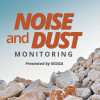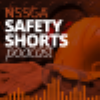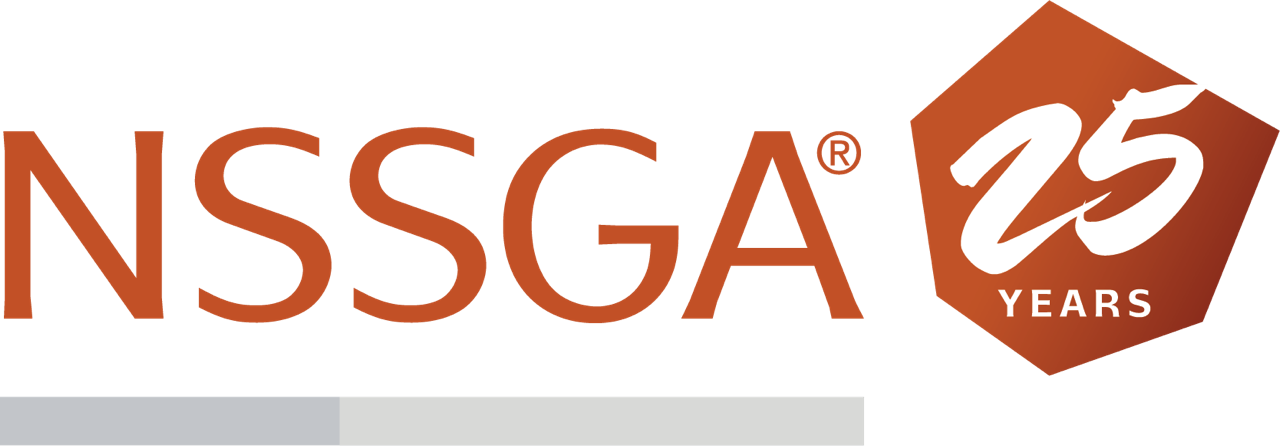Health & Safety
Aggregates and industrial sand producers are committed to promoting the health and safety of their most precious resource - their workers. We support reasonable regulations and standards that are based on sound science. Working proactively with federal partners, such as the Mine Safety and Health Administration (MSHA), is essential to creating even safer workplaces. While we support a MSHA rule on respirable crystalline silica that is both protective of workers and reasonable for employers, we believe the 2024 final rule does not do so and work must continue towards that end. However, we are concerned about numerous rulemakings at the Trump Department of Labor that do not make the industry a safer or heathier workplace but only add unworkable mandates and regulations.
NSSGA member companies go to great lengths, frequently above and beyond current regulations and laws, to provide safe and healthy work environments. The results of the industry’s commitment to safety are clear: since the early 1900’s, when the first recorded number of fatalities for the industry was 883, that number plummeted to 15 fatalities in 2019, the second lowest number ever recorded. But each work-related injury, illness, or fatality is one too many. NSSGA and its member companies will not be satisfied until every employee goes home safely at the end of each shift and is able to retire in good health when they are ready to do so. That is why we remain vigilant in our safety and health efforts and continuously strive to achieve our goal of zero injuries, illnesses, and zero fatalities. Those working in the aggregates industry take great pride in supplying the nation with vital building materials safely and efficiently. Health and safety are industry values inherent in the daily routines at our plants, at our customers’ sites, and within our communities.
Resources

Take Control: Prevent Serious Injuries and Fatalities - The Take Control program highlights 10 activities that have a high potential to cause a SIF, then identifies high-risk tasks and associated critical controls to be in place to prevent a SIF. The program is intended to supplement existing training programs and put a spotlight on situations where miners face a higher potential of a SIF occurring.
MSHA’s Powered Haulage Rule - MSHA’s final Powered Haulage Rule came out at the end of 2023 and enforcement begins July 17, 2024. The rule requires operators to create and follow their own powered haulage safety program. To help members create their programs, NSSGA created three fillable templates that comply with the requirements set forth in the rule. These templates were reviewed by MSHA and shared on the agency’s website. Safety Program for Surface Mobile Equipment | Safety Program for Surface Mobile Equipment: Program Evaluation | Safety Program for Surface Mobile Equipment: Technology Evaluation

Noise & Dust Workshop - The National Stone, Sand & Gravel Association (NSSGA) hosts a Noise & Dust Workshop, which prepares miners and mine operators to conduct ongoing noise and dust sampling at their facilities. See if a workshop is currently scheduled!
Safety Month - June is National Safety Month. Throughout the month, NSSGA shared news to help keep safety values front and center, as it is a core value of our members. Safety Month 2022 | Safety Month 2023 | Safety Month 2024 | Safety Month 2025

Safety Shorts Podcast- NSSGA’s Safety Shorts Podcast is a quick resource for you to use with your team during Toolbox Talks. Safety Shorts can be found on the NSSGA Podcast feed, available on Apple Podcasts, Spotify or wherever you get your podcasts. If you subscribe, each new podcast will automatically show up in your feed as soon as it is published each month. And it costs nothing.
Addressing Distractions on Mine Sites - Distractions on mine sites can be deadly. It is important to recognize distractions, understand what causes them, and proactively work to minimize or eliminate miners from becoming distracted. Here are proactive ways you can address one of the greatest causes of accidents and injuries. Use the Distraction Self Audit Guide to identify current practices around distractions and where improvements can be made.
All In for Safety Poster - Safety is everyone's responsibility. We've partnered with our association allies to provide this safety poster for the industry. Each participating organization has shared its best safety tip included on the poster that can be printed and posted in your workplace.
Keeping Toolbox Talks Fresh - Discussions at the beginning of a shift that bring awareness to safety and health topics are routing throughout the aggregates industry. But materials can get stale. Here, we offer suggestions to keep messages fresh and impactful to keep your workers safe. Download the printable pdf to post in your workplace. And reference the more detailed web page for even more helpful suggestions.
Rip & Shares - The NSSGA-MSHA Alliance drafts Rip & Shares on key safety issues to raise awareness and share best practices. These resources are included in each issue of NSSGA’s bi-monthly magazine Sand, Stone & Gravel REVIEW and are published in both English and Spanish.

Why Risk It? Just Click It! – NSSGA’s Seatbelt Safety campaign. The safety of our workforce is at the core of everything we do. NSSGA’s seatbelt safety campaign highlights the importance of wearing a seatbelt while on the job, so everyone goes home safely at the end of each and every shift.

Get The Shot - NSSGA has gathered the below resources, which includes information on the COVID-19 vaccine; examples of how NSSGA members are helping their employees get vaccinated; and testimonials from others in the industry to #GetThe Shot.
Partnerships & Alliances
-
National Occupational Research Agenda (NORA). The National Occupational Research Agenda Mining Sector Council brings together mining stakeholders to share information and identify current and emerging safety and health problems in the mining industry. As members on the council, NSSGA helps identify long-term research and development goals that result in safety and health benefits to our miners.
-
MSHA-NSSGA Alliance. Since 2003, MSHA and NSSGA have maintained their Alliance to promote a national dialogue on mine safety and health by sharing information on best practices, creating educational materials, and promoting effective approaches to eliminate mining hazards. The Alliance meets twice annually to discuss safety and health priorities and develop current and upcoming initiatives.
-
Respirable Mine Dust Partnership (MSHA-NIOSH-Mining Industry). The Respirable Mine Dust Partnership was formed between MSHA, NIOSH, and industry stakeholders in 2019 to provide a forum of discussion and sharing information related to a broad range of respirable hazards, including respirable crystalline silica, among miners and provide recommendations addressing shortcoming in the exposure data. NSSGA is an active partner and additional goals include reviewing existing literature related to quartz and other exposures, providing recommendations addressing shortcomings in the data, and identifying easily achievable recommendations that will have near-term benefits to reduce miners’ exposure to respirable hazards.
-
Mine Safety and Health Research Advisory Committee (MSHRAC). The Mine Safety and Health Research Advisory Committee advises NIOSH (U.S. Department of Health and Human Services, CDC) on the conduct of mine health research, including the making of grants and entering into contracts for mine safety and health research. NSSGA maintains membership on the committee and engages with NIOSH regarding its ongoing and new mine research activities, including evaluation to ensure research addresses important mine safety and health questions both in terms of applicability of the research finding and translation of the findings.
-
Small Business Administration's Small Business Labor Safety Roundtable. NSSGA and other stakeholders, including both MSHA and OSHA, participate in the Small Business Administration’s Office of Advocacy regulatory roundtables related to workplace safety and health. NSSGA provides input to the agency from the perspective of small businesses concerning regulatory actions by OSHA or MSHA and when setting occupational health and safety priorities.
-
Mine Automation and Emerging Technologies Health and Safety Partnership. NSSGA participates in NIOSH’s Mine Automation and Emerging Technologies Health and Safety Partnership, which addresses issues pertaining to the health and safety implications of automation and emerging technologies in mining operations. NSSGA provides input to NIOSH and discusses the state of technology, research findings, health and safety concerns, regulatory considerations, research gaps, and share priority areas for the aggregates industry.
-
American Society for Testing and Materials (ASTM), D22 Committee. The D22 Committee holds two technical meetings a year with the goal of improving workplace air quality. Several NSSGA staff and member companies’ experts maintain membership on the committee. They work to develop sampling and analytical methods for source emissions, ambient, workplace and indoor atmospheres, and meteorological conditions.

